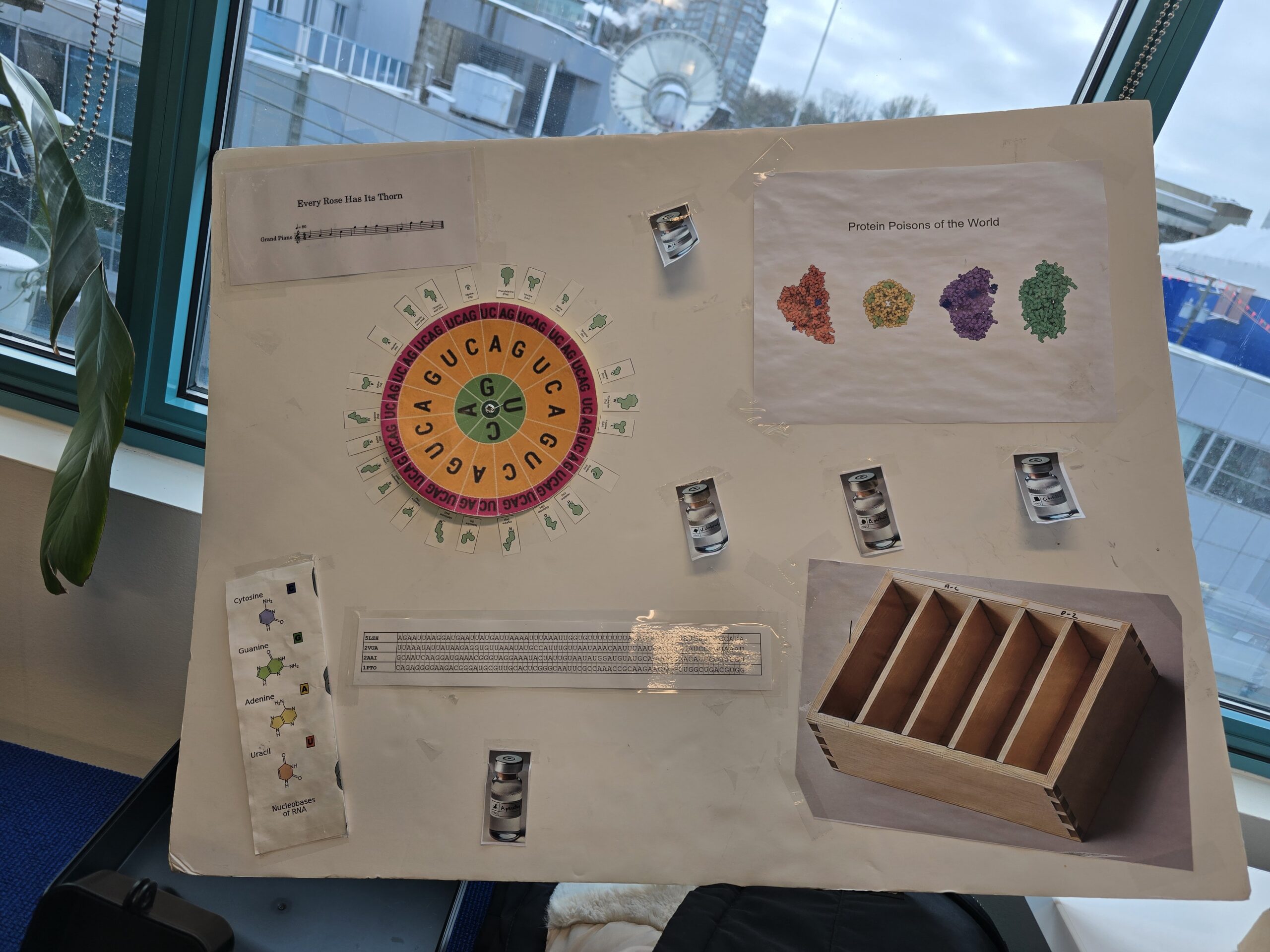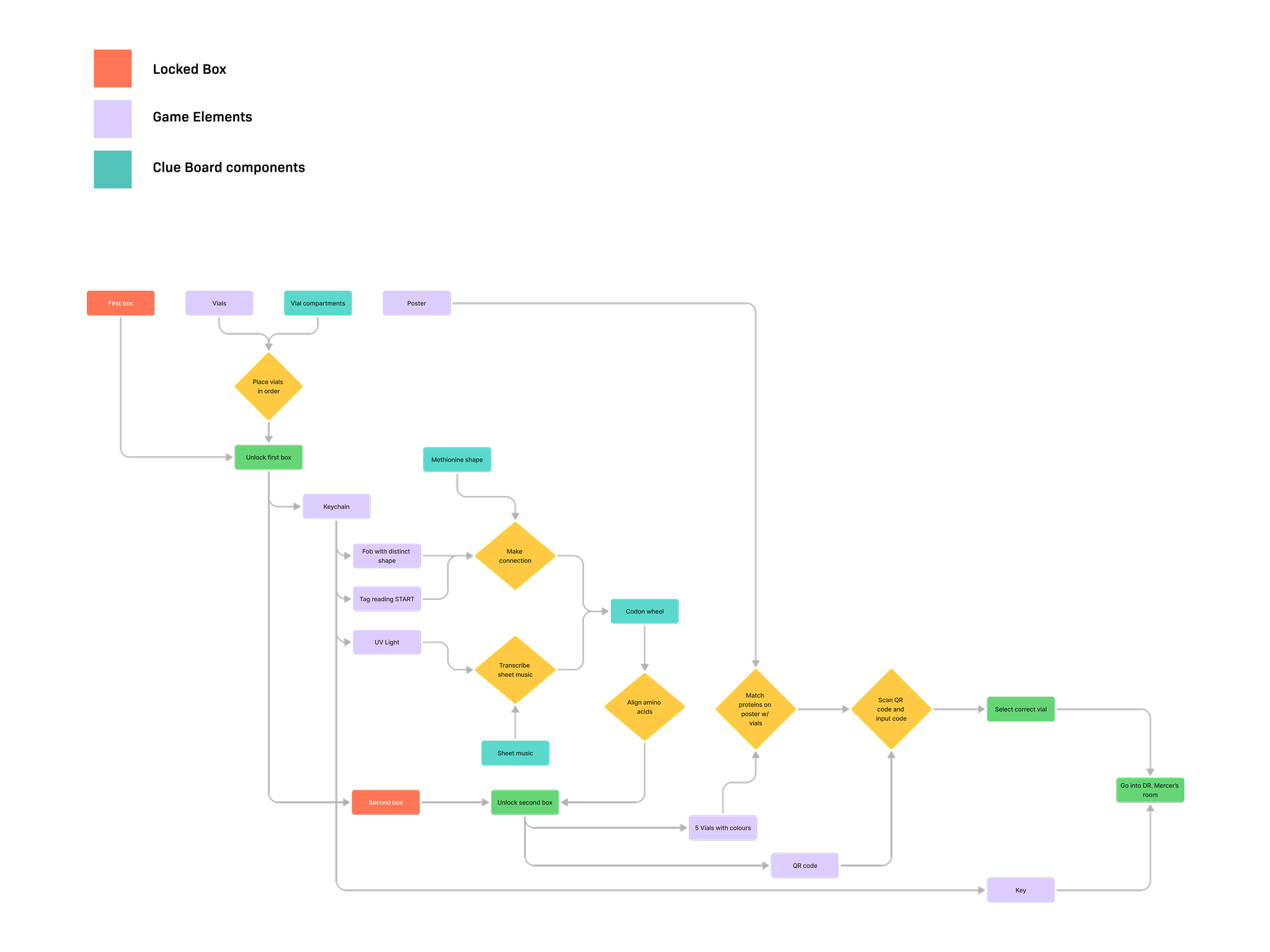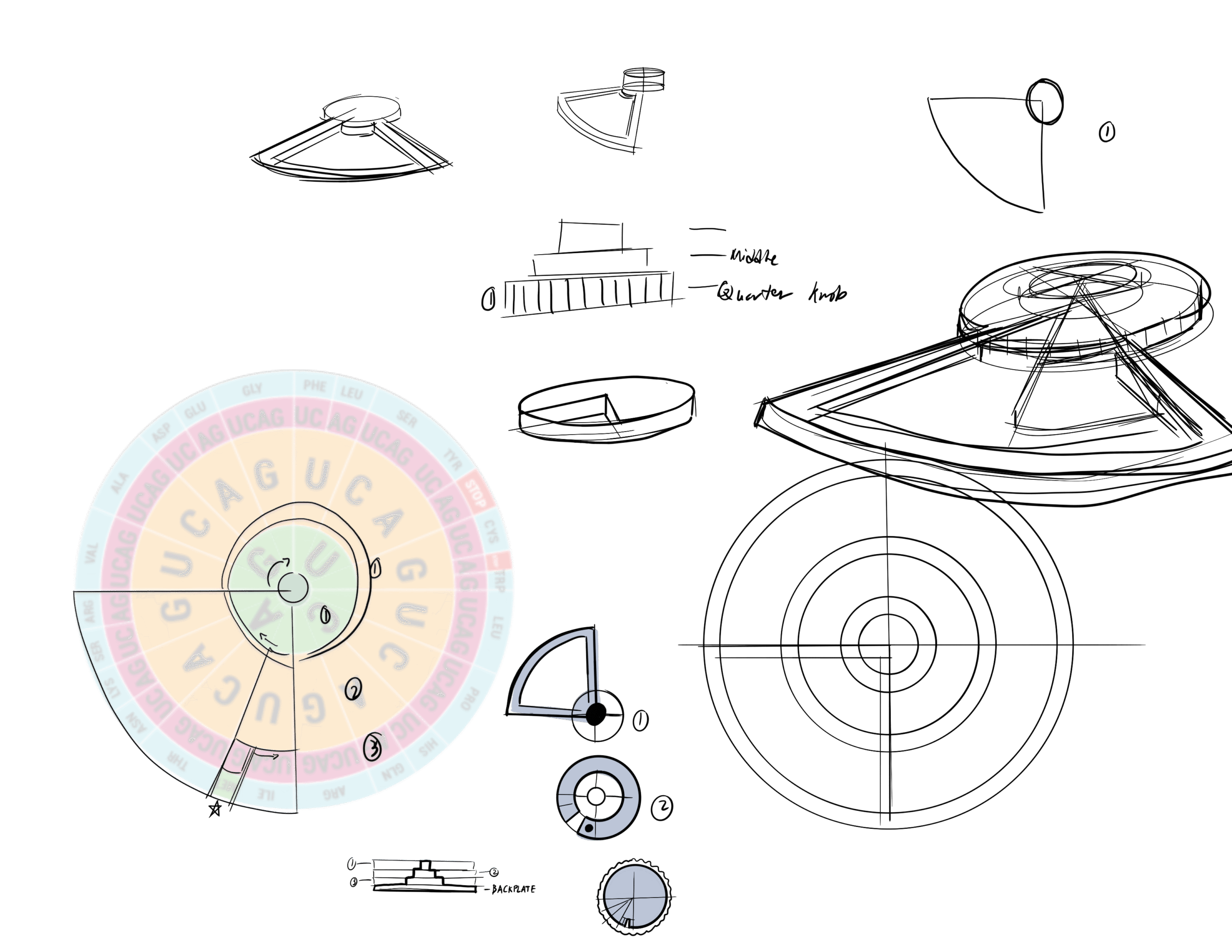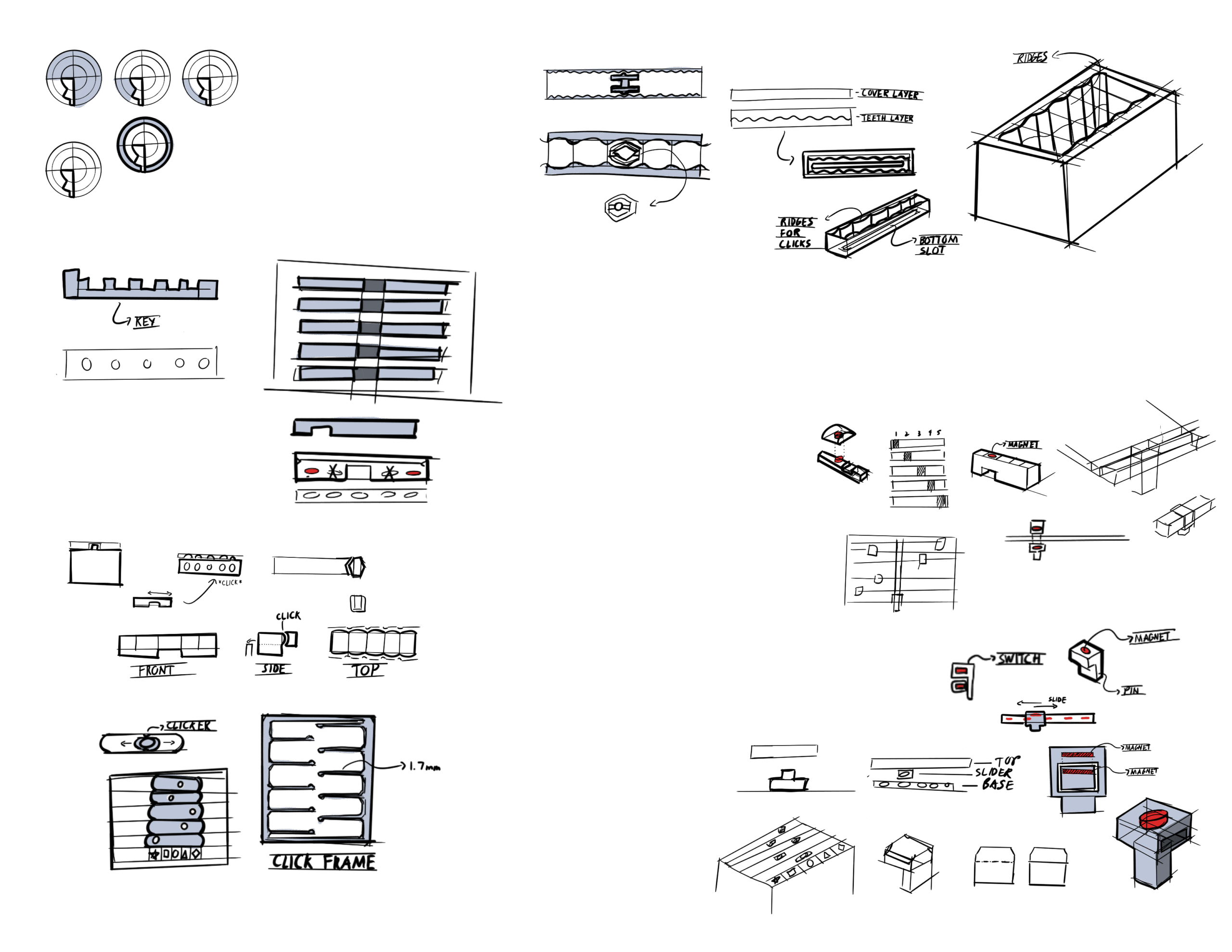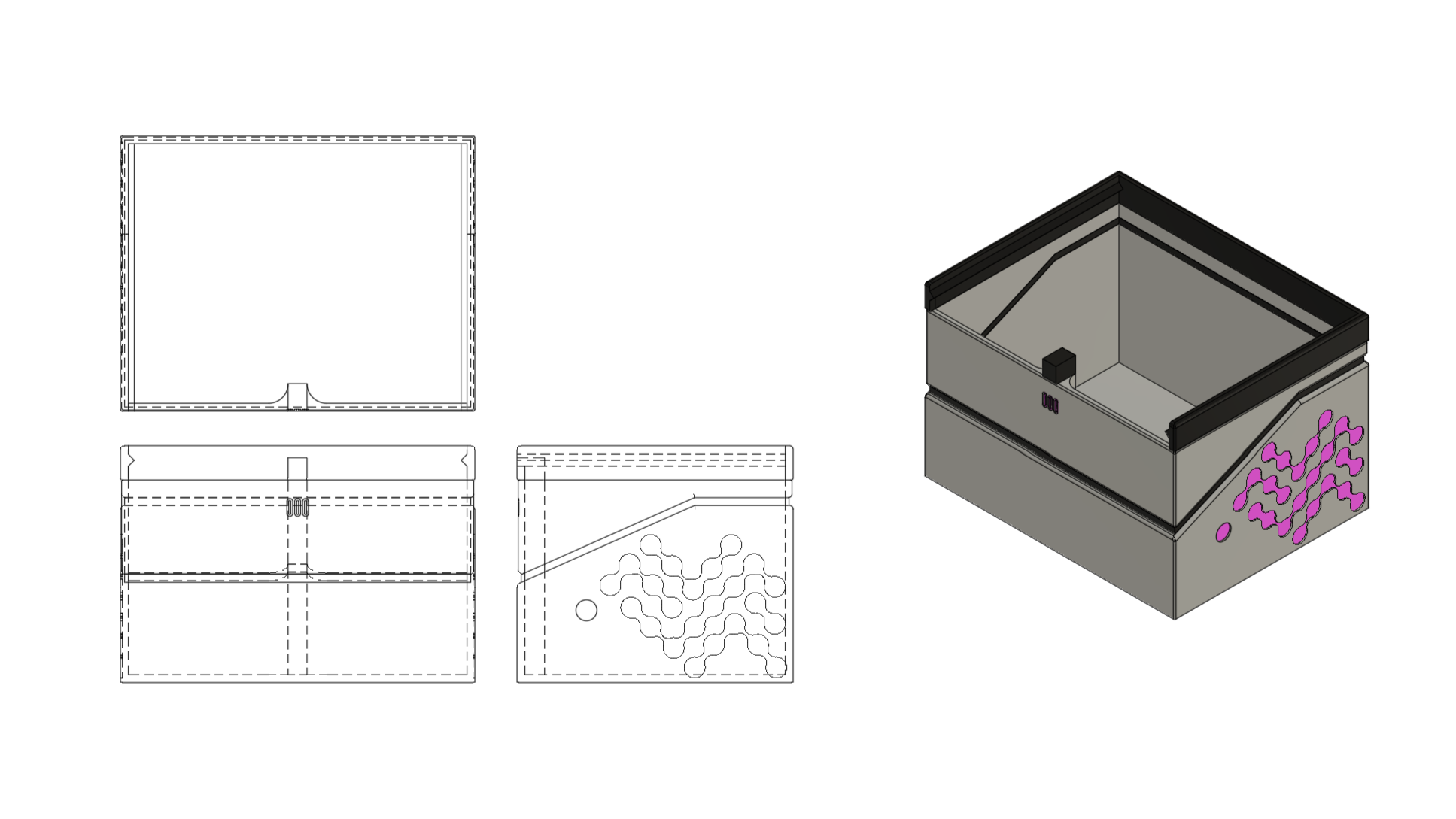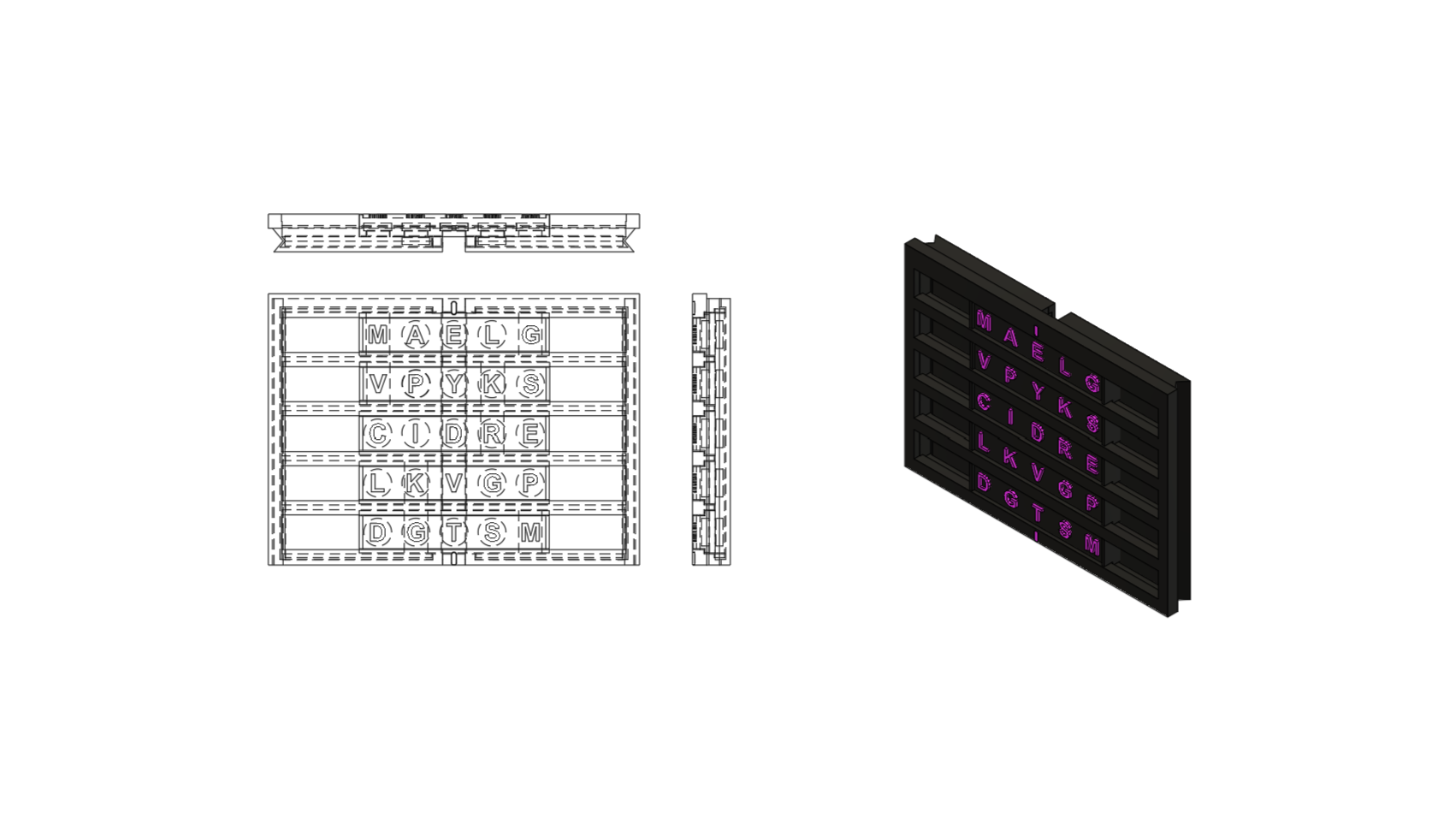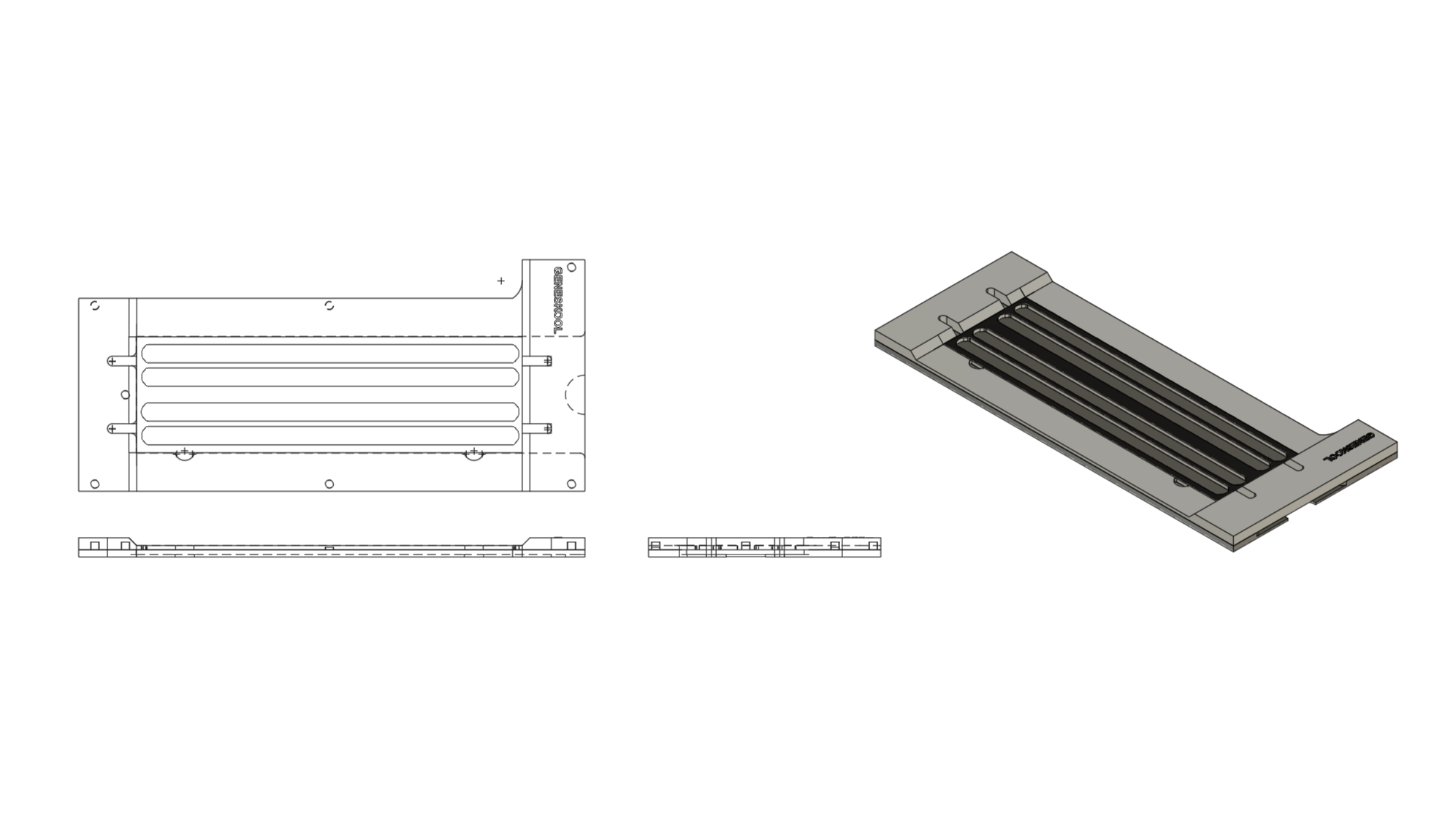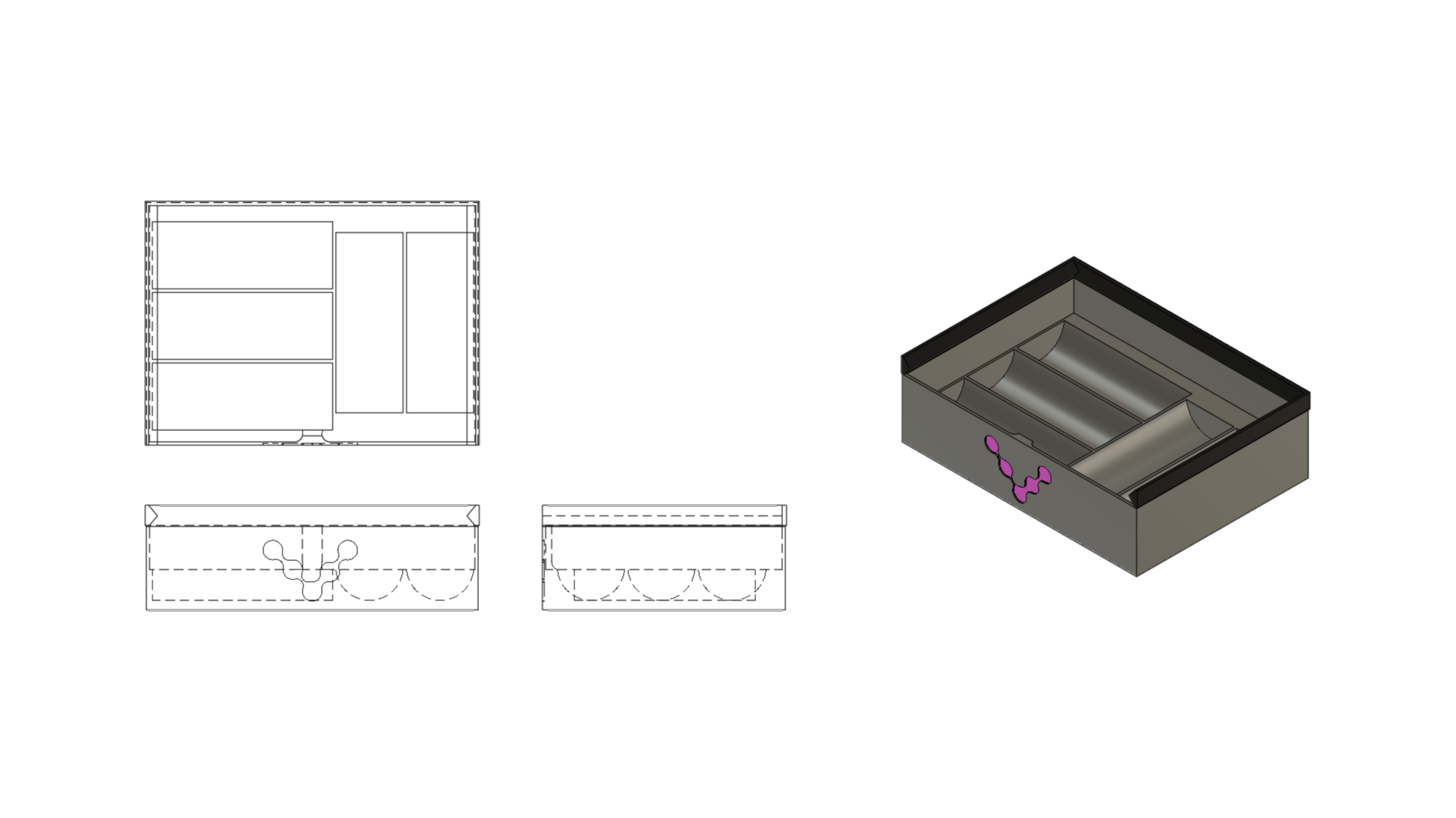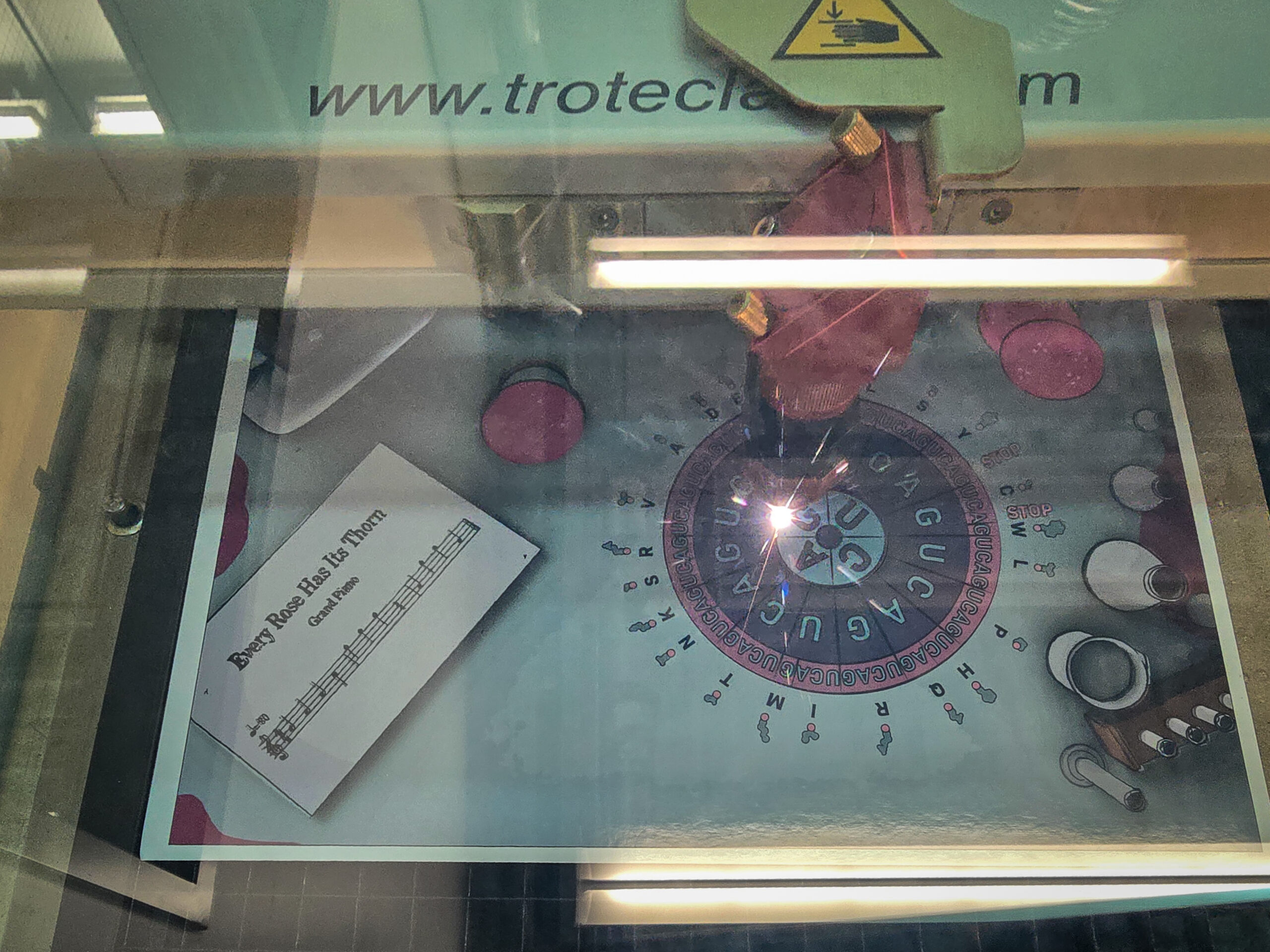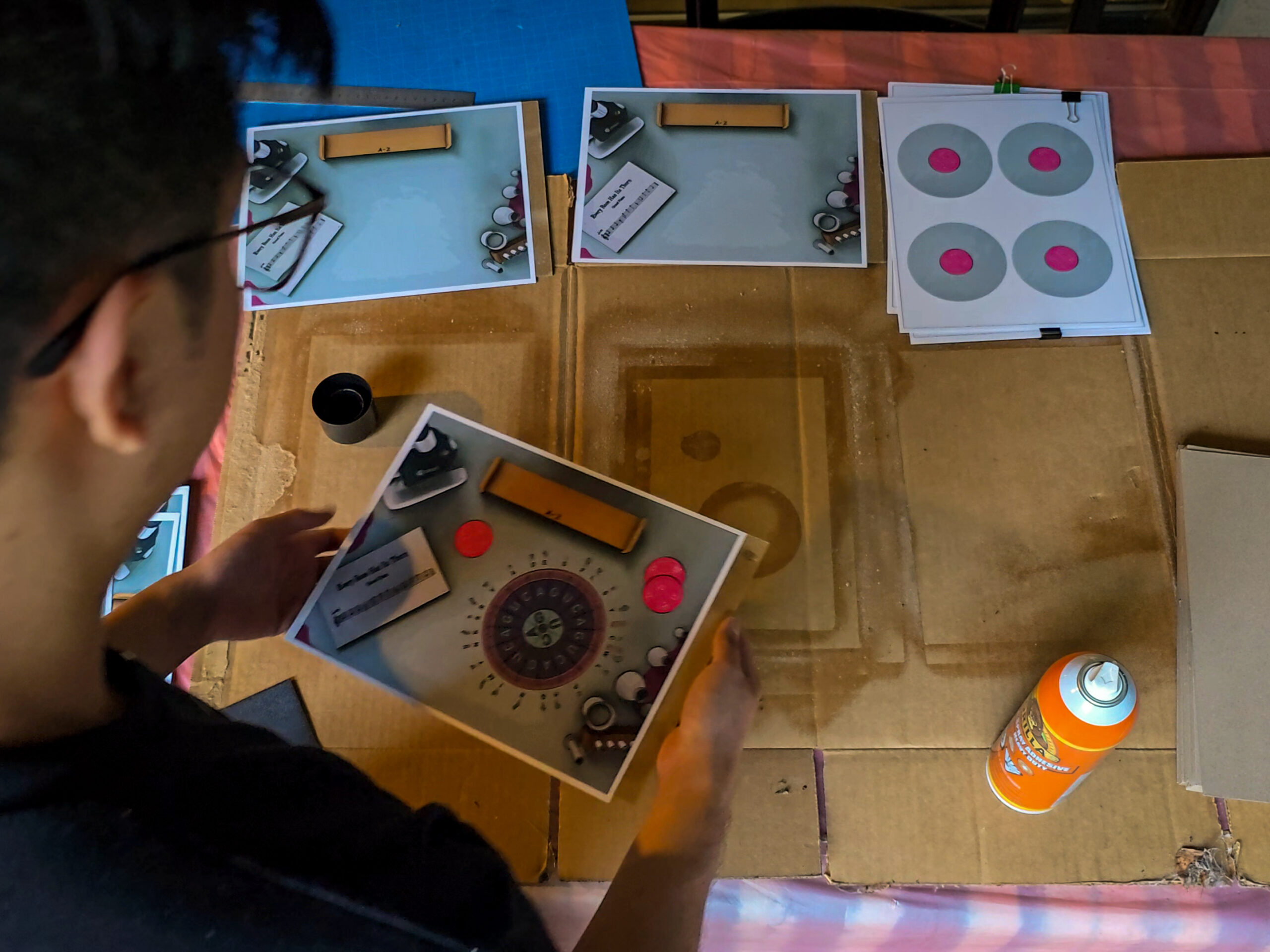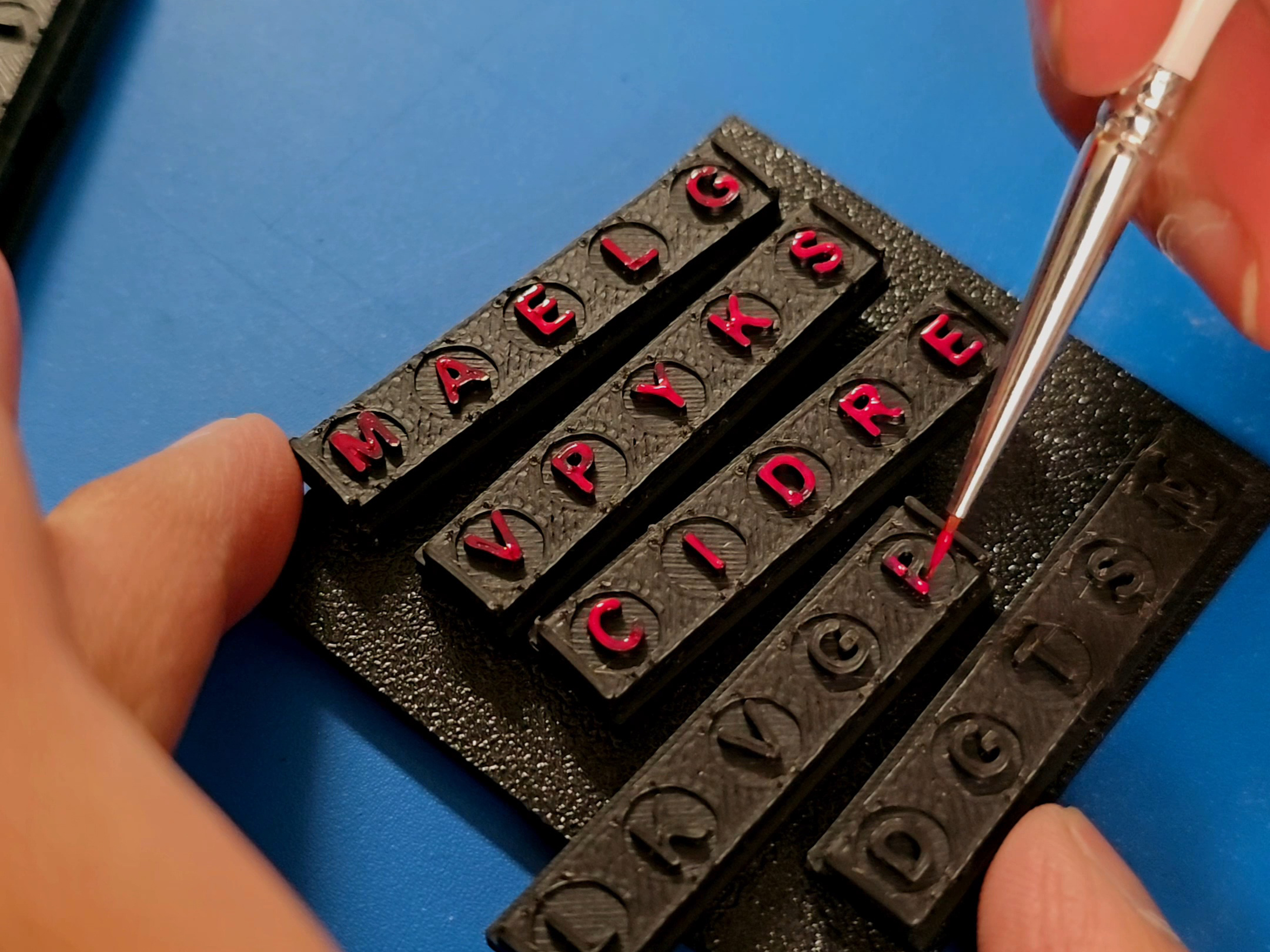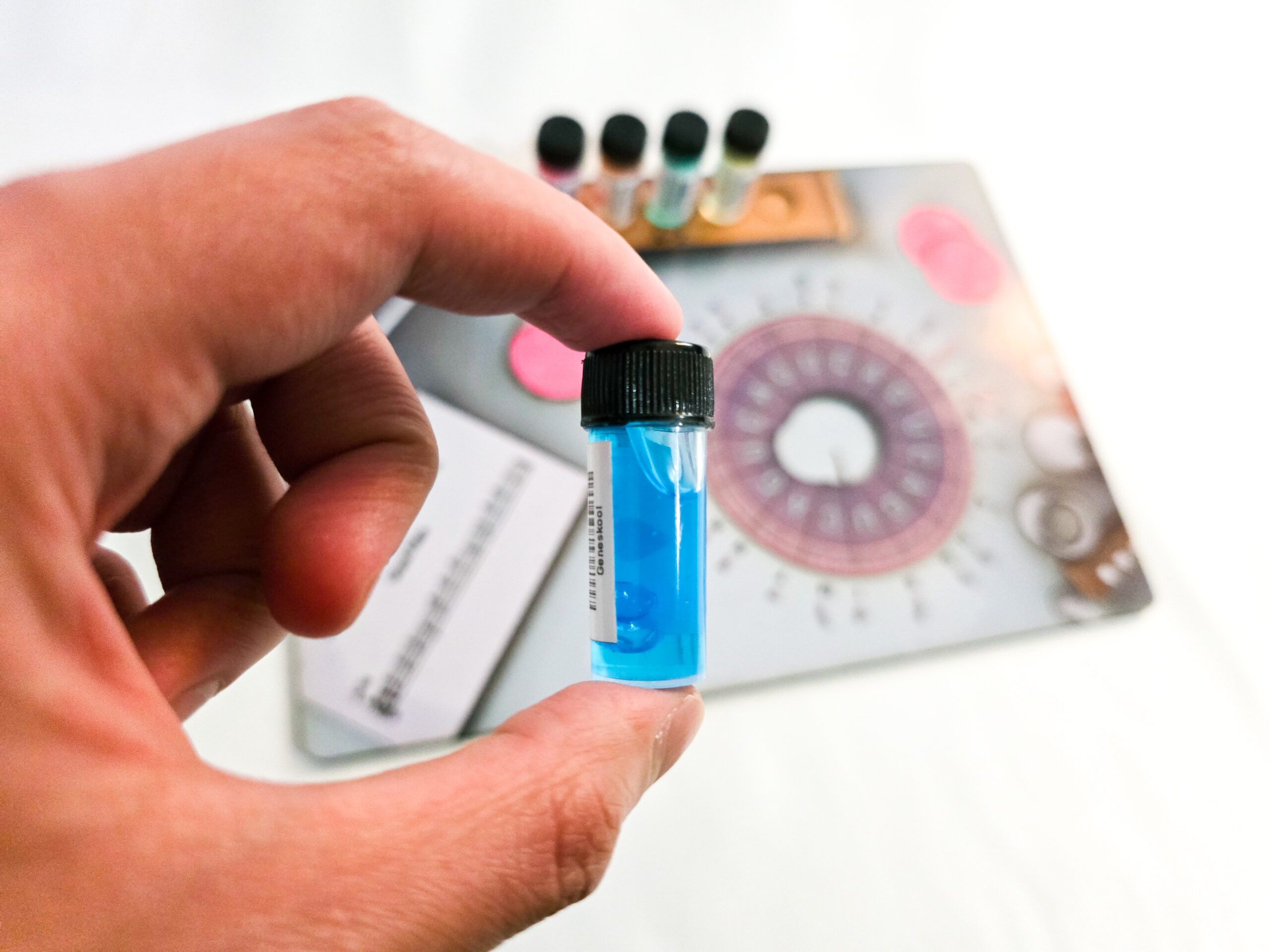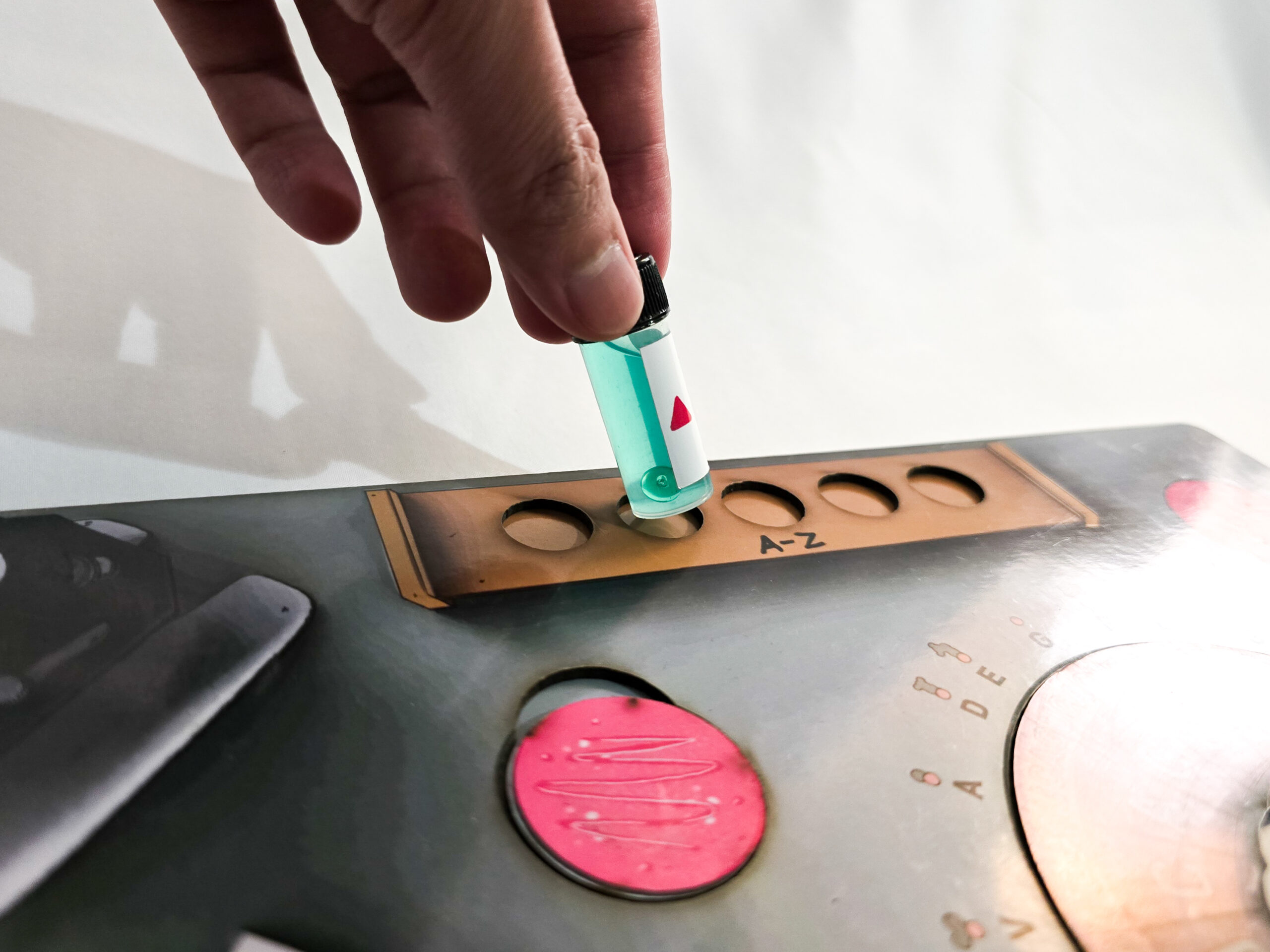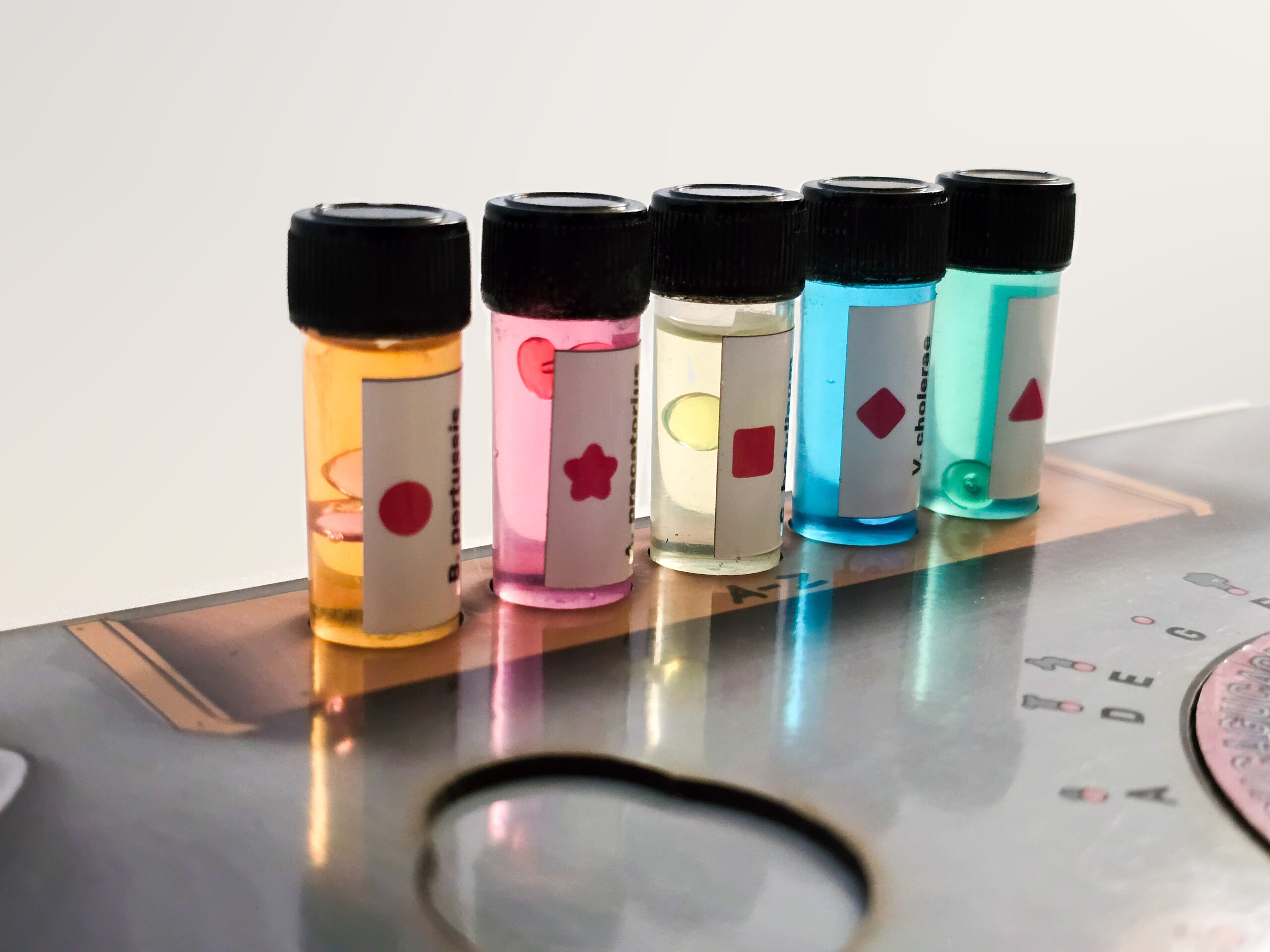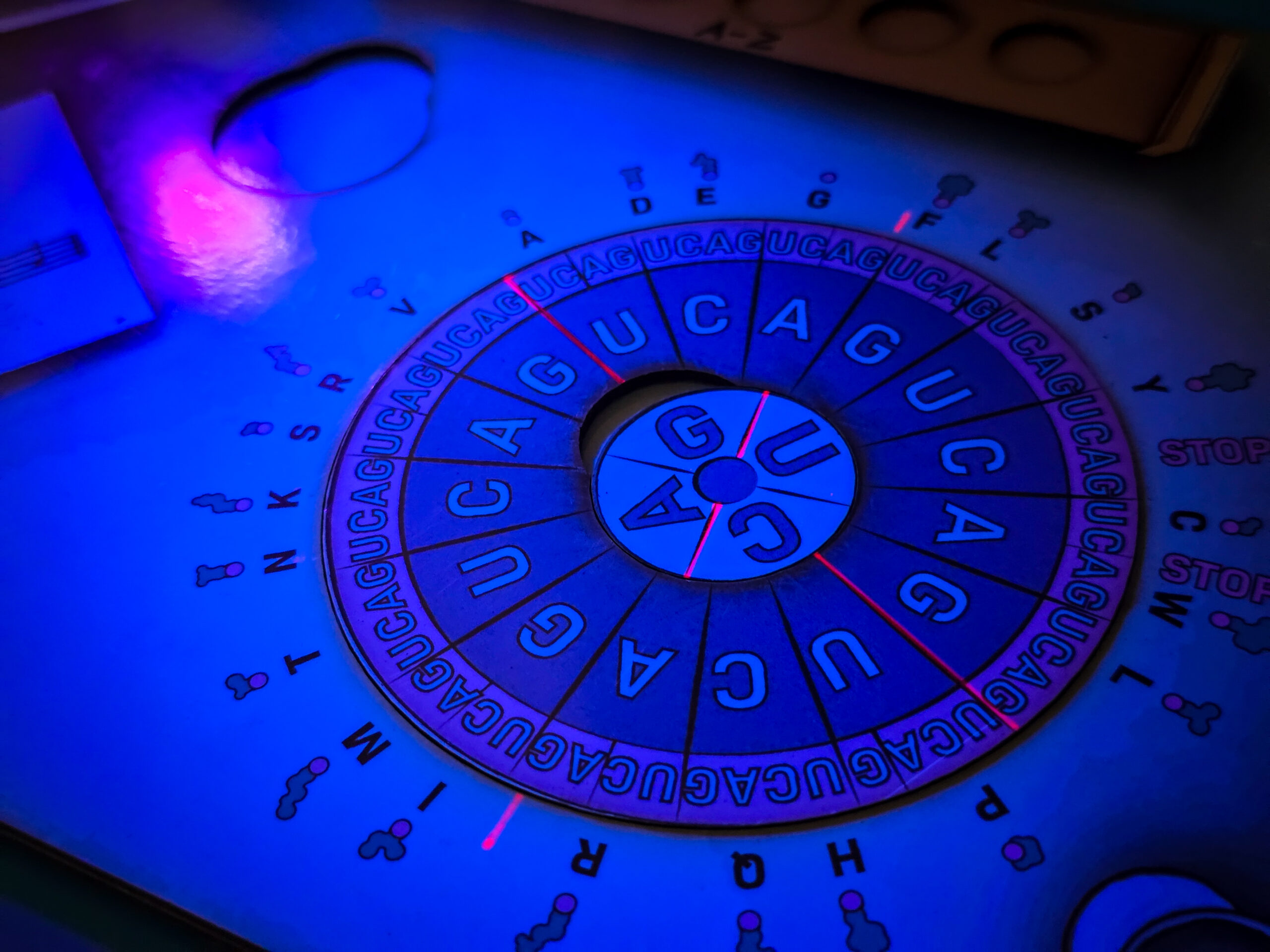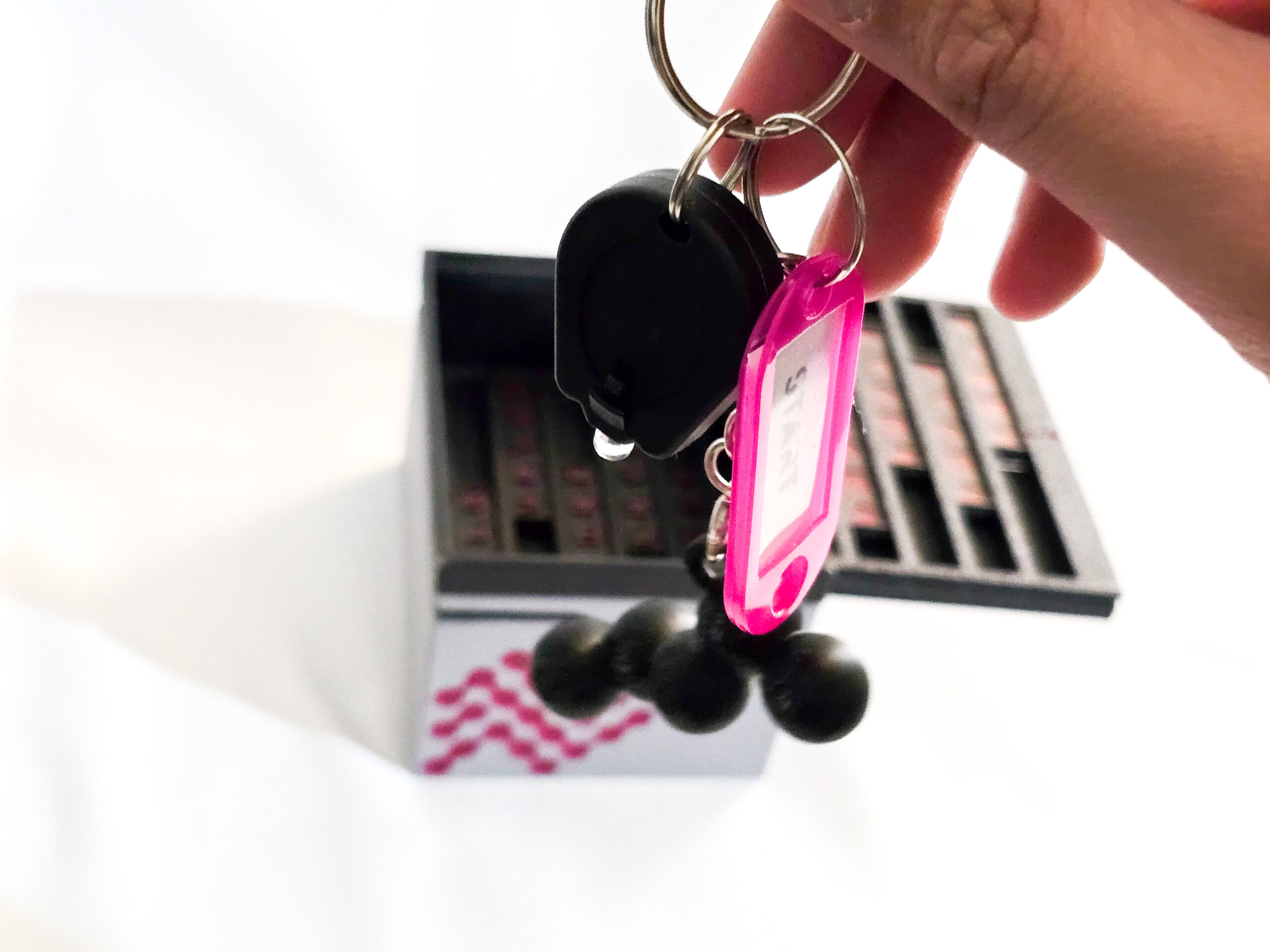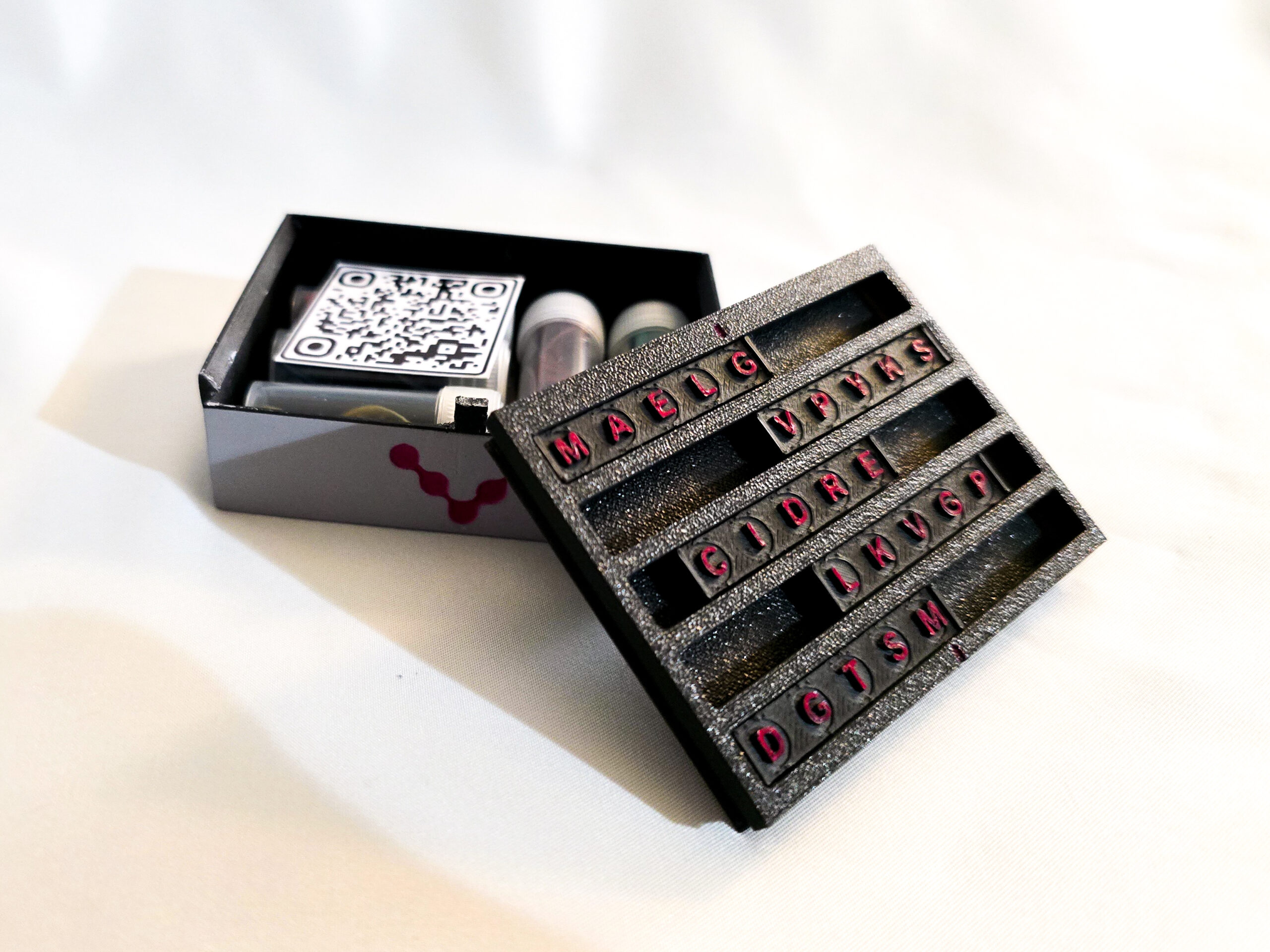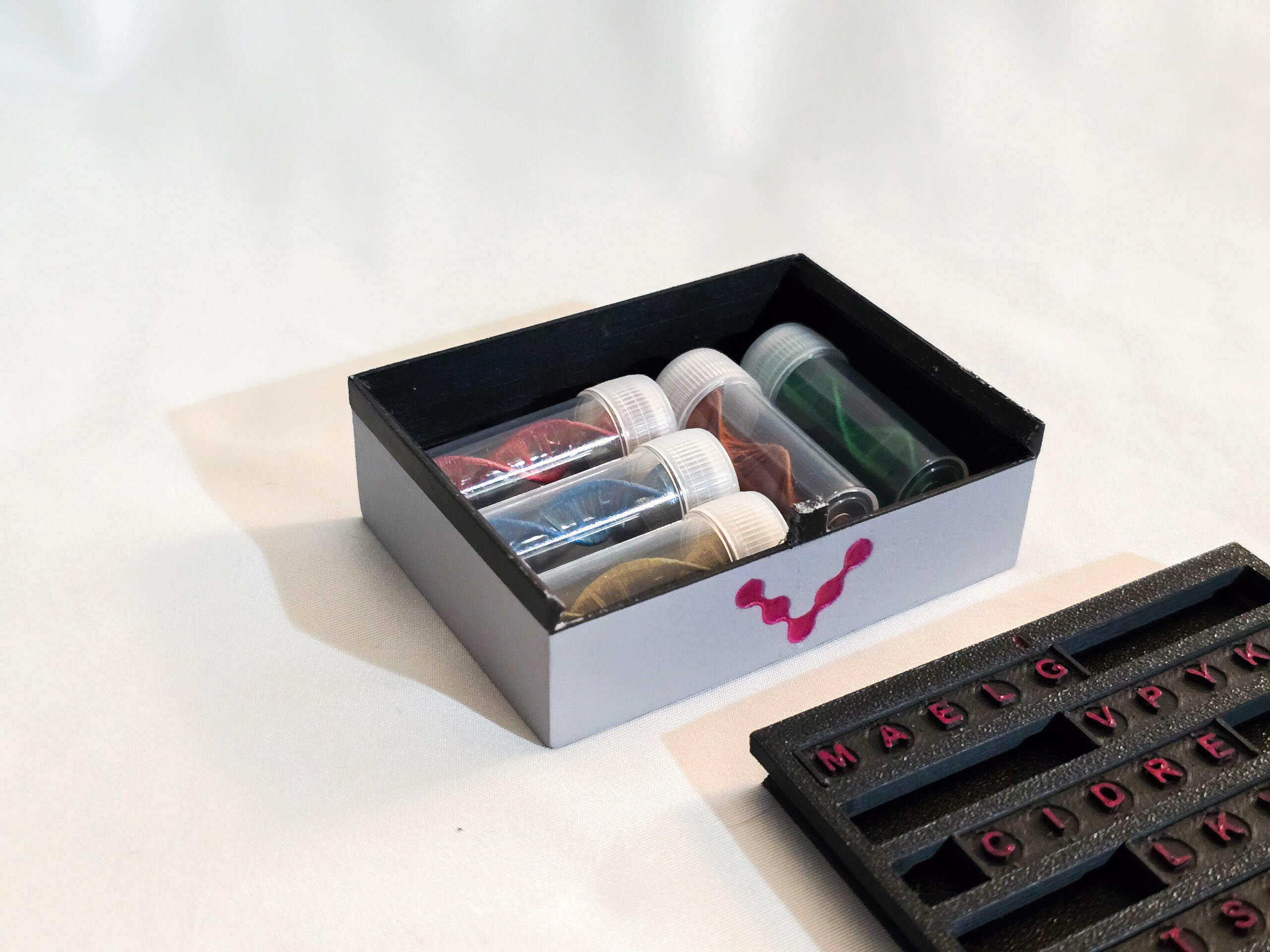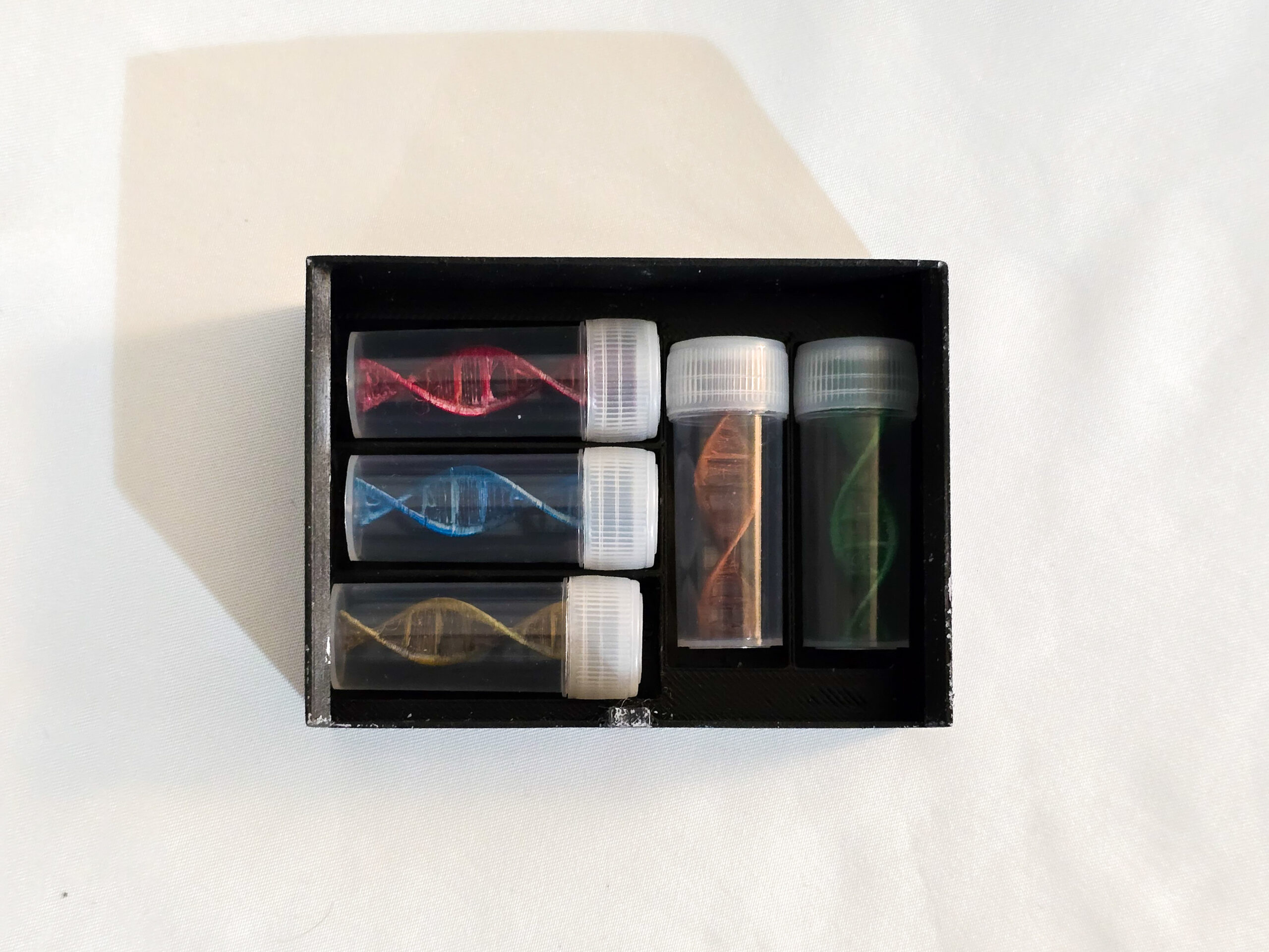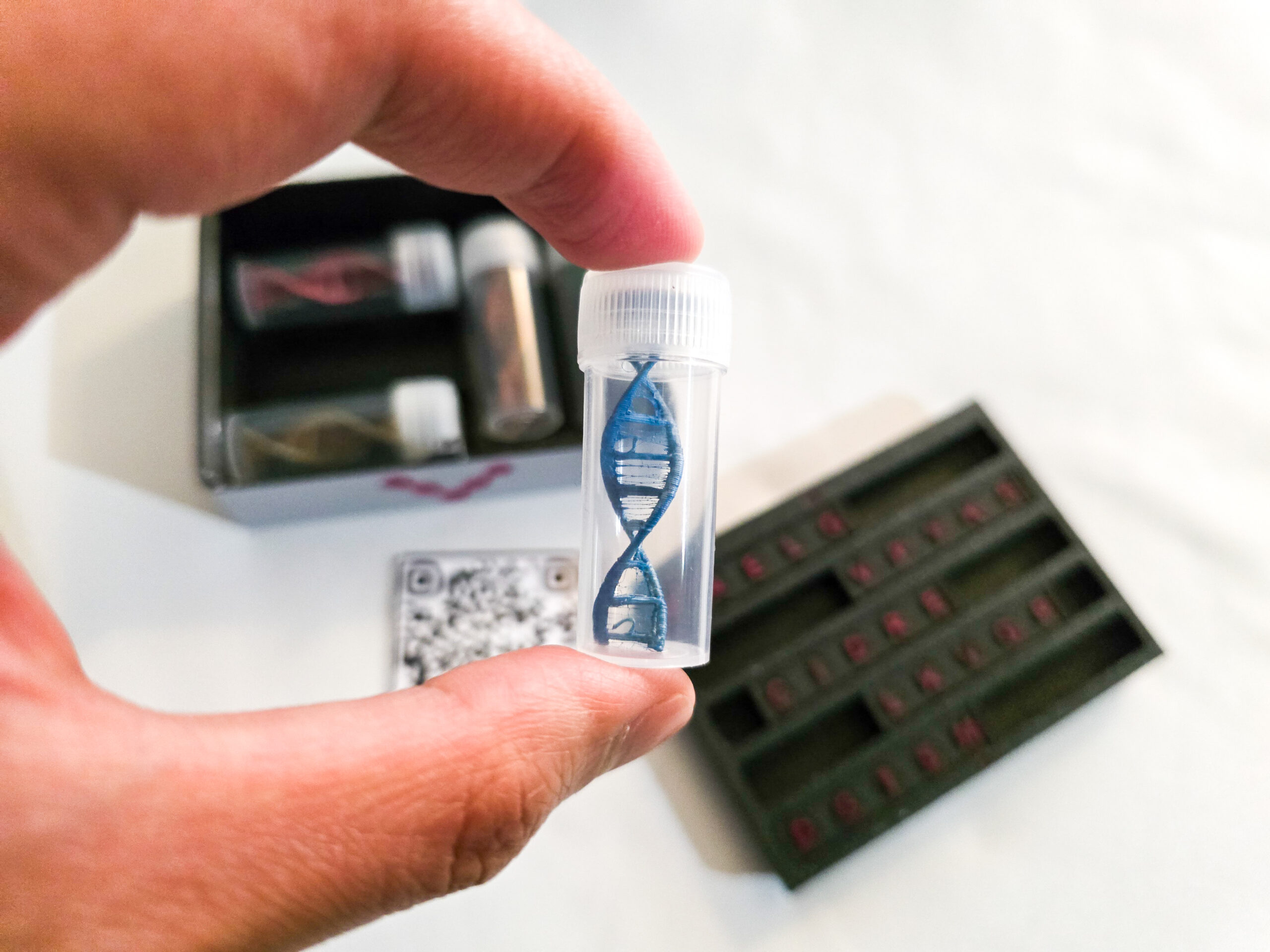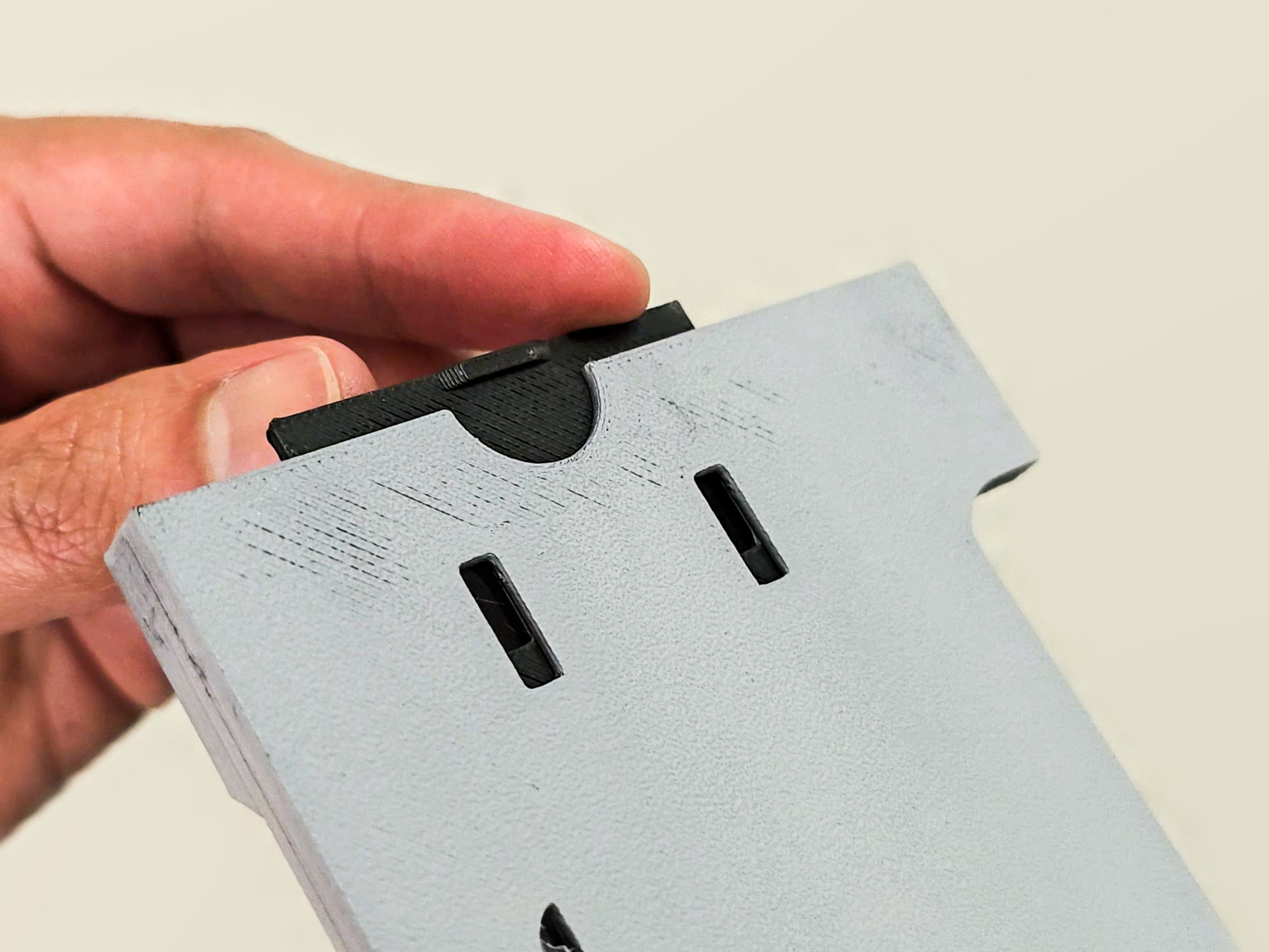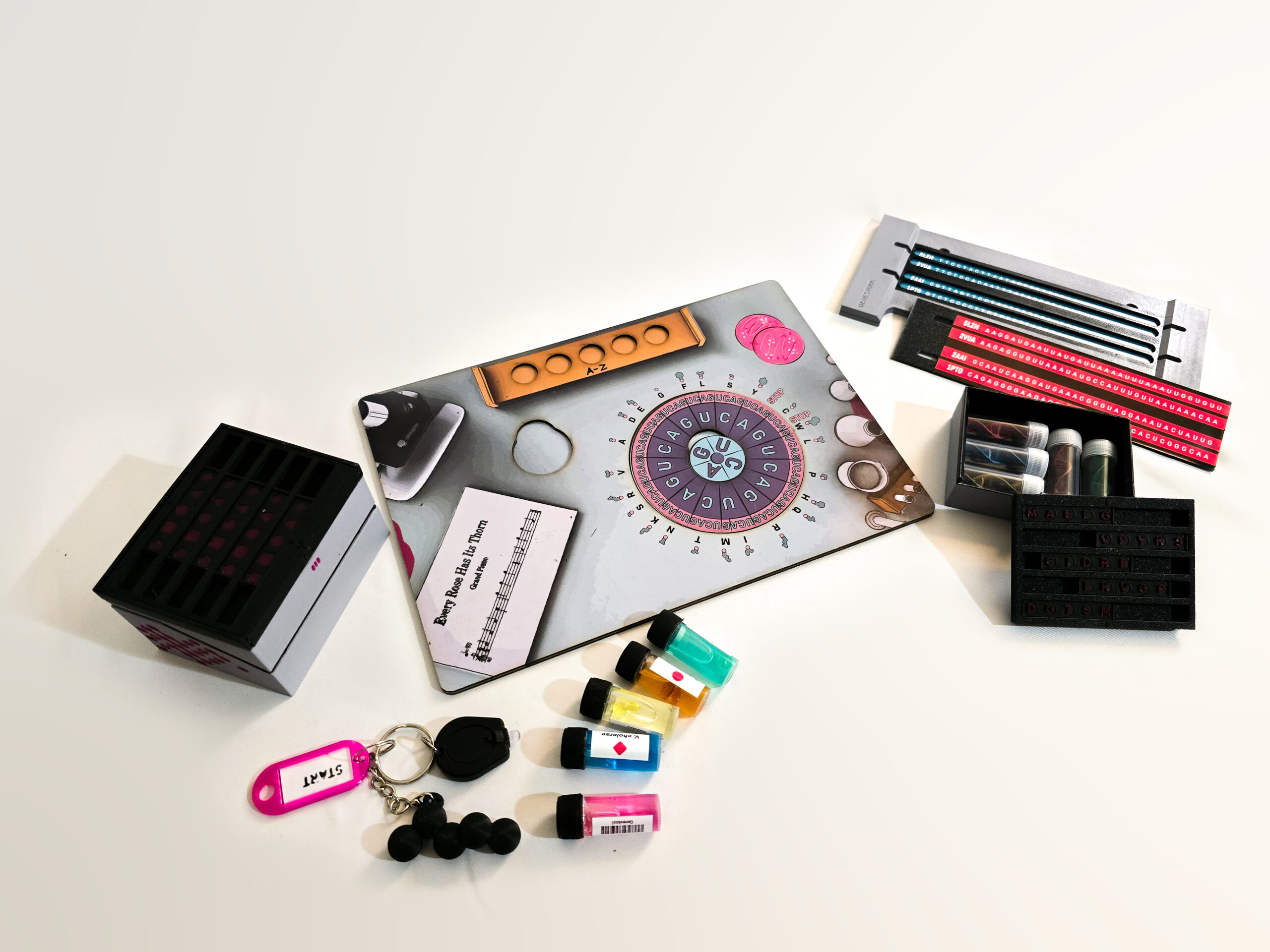GAME DESIGN • EDUCATION • EMBODIED LEARNING
Transcribe to Survive
A tabletop escape room for Genome BC's Geneskool program that aids in teaching high school life sciences across classrooms in British Columbia.
Role: Industrial Designer
Type: Contract Project for Genome British Columbia
Year: 2025
In collaboration with
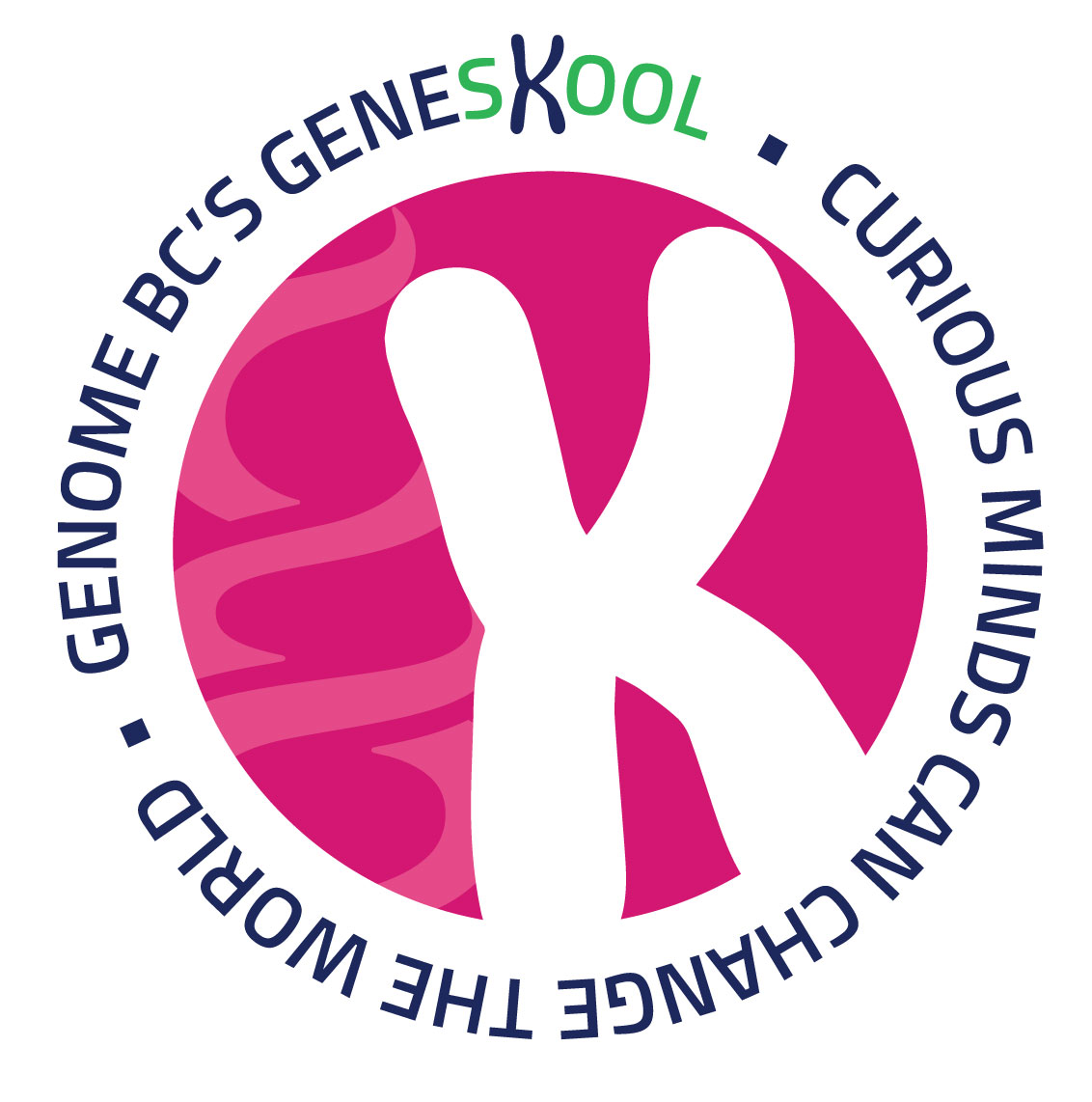
Background
This project is a collaboration with Genome British Columbia's educational outreach project, Geneskool. Genome BC is a not-for-profit organization supporting world-class genomics research and innovation. In addition to scientific programming, Genome BC works to integrate genomics into society by supporting responsible research and innovation and foster an understanding and appreciation of the life sciences among educators, students and the public.
The project sought to create a tabletop escape room classroom workshop that aids in teaching DNA/RNA Transcription to high school students in BC, Canada. It underwent several iterations throughout yhe duration of six months.
I proposed that most components be digitally fabricated through 3D printing and laser cutting in order to have the fabrication of the kits be replicable at any time with the appropriate tools.
Key features to improve the user experience, handheld interactability, storage, and delivery to workshop areas proposed for this tabletop escape room were:
Lightweight
Portable
Compact
Interactive
Visually Immersive
DESIGN QUESTION
How might we design a lightweight, portable, and interactive tabletop escape room that aids in educating a group of 3-6 high school students in gene expression that is fun and engaging?
A flow diagram was made in the beginning of the project to detail the various components of the tabletop escape room at different stages of the game. This was to account for the various game components and their corresponding relationship not only to each other, but to the users and storage units.
Game Components
The various game components were all digitally fabricated, either through 3D printing or laser cutting in order to be easily replicable in the future. These components were carefully crafted to not only enhance user experience when interacting with them, but also to enhance curricular delivery for the specific topic to high school students.
Clue Board
This is a dual-layer board that is made from laser-cut chipboard. The graphic print mimics the top view of the evil scientist's desk to which the players are looking over. On the desk, they can find different clues to help them escape the room the evil scientist had locked them in with poison circulating inside.

The codon wheel is divided into sections where the inner-most section hides itself as a petri dish elsewhere on the board. When players put the two pieces together, they complete the codon wheel to be referenced in acquiring the codes for the puzzle box.
Coloured vials with bacteria names and shapes can be found with the clue board and it is up to players to decipher the order in which these vials go on the board. The sequence dictates the code needed to open the first puzzle box.
Large Puzzle Box
This is the first puzzle box which contains the smaller second box and keychain inside. A combination of different shapes (star, square, circle, triangle, and diamond) are used as the code which can be deciphered by the previous activity with the rearranging the coloured vials in alphabetical order. To unlock the box, players can use the code sequence from the vials of the clue board either top-down or reversed.
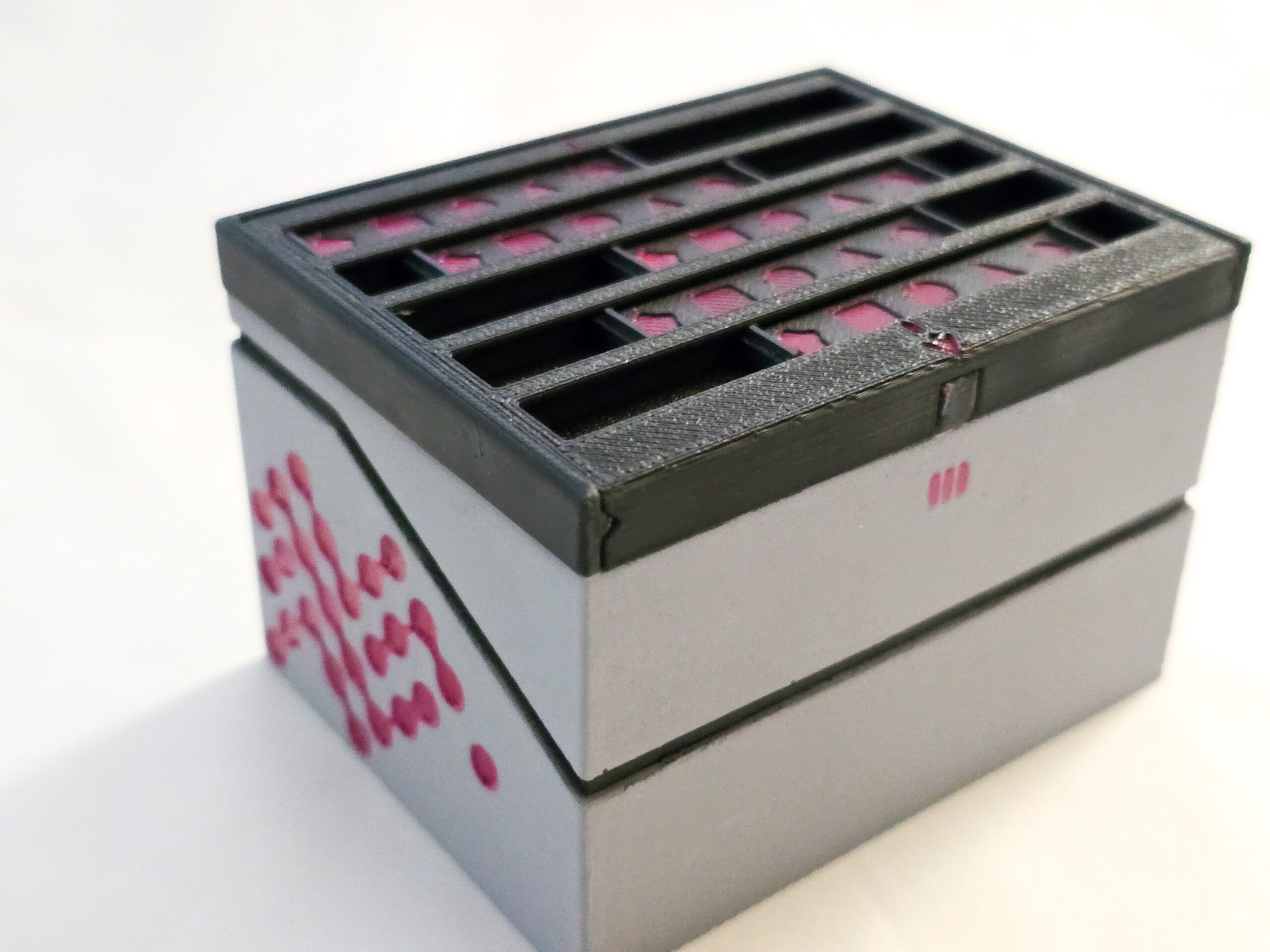
The contact surfaces for both the sliding plates and the magnet base below them were 3D printed using a textured bed plate in order to have a gritty feeling when sliding against each other for both tactile and auditory feedback, resulting in a satisfying clicking sound. Magnets inside these components are also used to align the gaps to the correct placement for a smoother pull out.
Small Puzzle Box
The second puzzle box can be found within the larger first box. Instead of shapes, this puzzle box uses letters deciphered from the clue board in order to open. To unlock the box, players can use the code sequence either top-down or reversed.
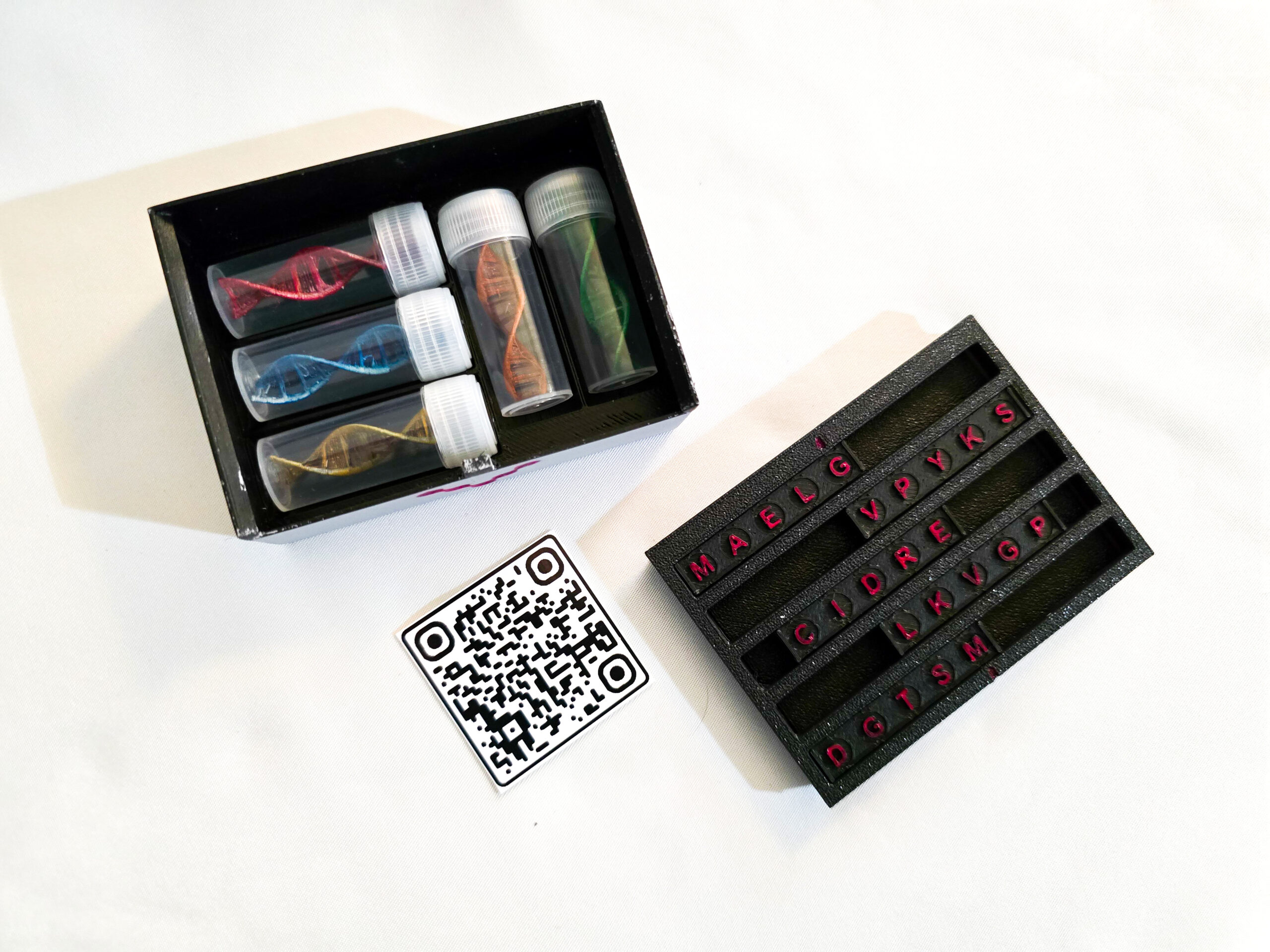
The construction is similar to the larger box where the contact surfaces for the sliding plates and magnet base were 3D printed using a textured bed plate for additional tactile and auditory feedback. It also makes use of magnets similar to its larger counterpart. Unlike its counterpart, however, this smaller puzzle box sports shelled out grooves on the inside to hold the tubes housing the options for the cure to the evil scientist's poison, represented by the different coloured DNA Helix.
DNA/RNA Sequence
This holds the DNA/RNA sequences used to decode the final stages of the game. It helps to swap out DNA slides with RNA slides, depending on the need of the workshop facilitator. The sliding mechanism, unexpectedly also helped in visual alignment for players to not get lost amidst the sea of letters when finding the code, as was evidenced in the playtesting with the internal team.
Its appearance is based off a flow cell in a genome sequencer machine from lab photos used as reference.
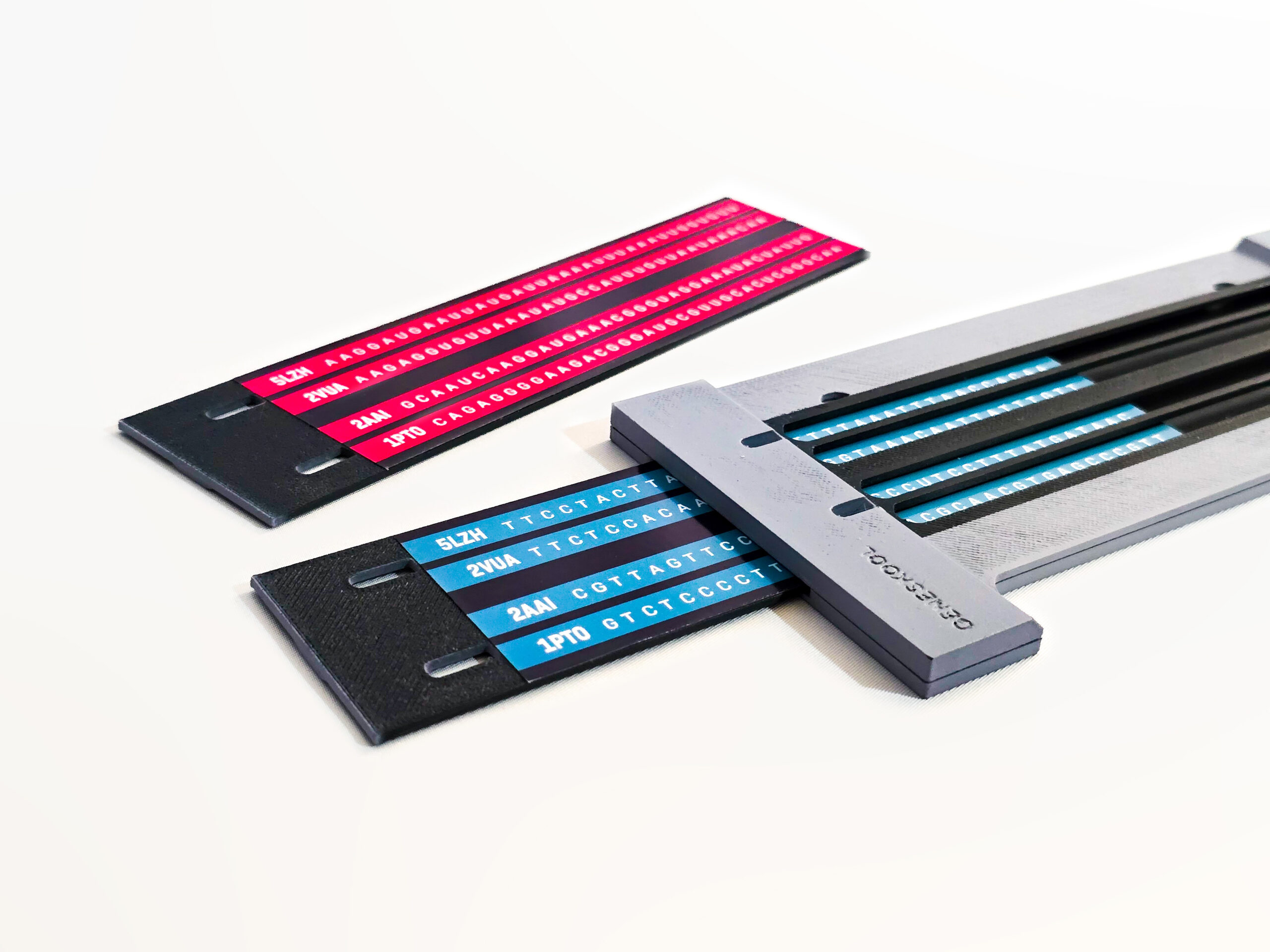
The sequence insert has a little notch to ease pulling in and out of the assembled case. Future iterations could explore having a double-sided face for this component to lessen the duplication for DNA (green) or RNA (red) options. Due to time constraints and to maintain enough tight of a tolerance so that the insert does not slide out easily, this was not explored as of this moment.
A fully 3D-printed version using multicolour printing was then subsequently developed in order to produce two more classroom kits comprising of a total of 12 tabletop escape room sets.
© Erik Asia 2025. All rights reserved.
